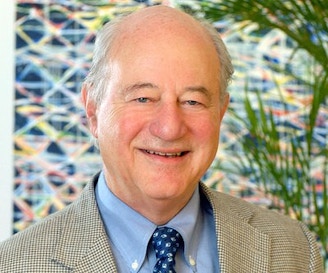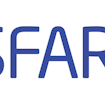
Autism research has attracted a remarkable diversity of scholars. Many of them have developed an understanding of concepts in fields that are not their own, but it is difficult to move beyond that level and think creatively in new domains. With this in mind, I plan to introduce topics that bridge fields, minimize jargon and place complex concepts in historical context. As we explore unresolved issues and uncover ’emergent properties’ not evident in one field or another, we may enrich our understanding of autism. Success depends in large part on your feedback, so I urge you to sign in and offer your comments.
The rapidly evolving neuroligin saga is a good place to start, as it offers a rare opportunity to bridge the gap between genes and cognition.
Thomas Bourgeron and colleagues at the Institut Pasteur provided a boost for autism research in 20031, when they examined two regions of the X chromosome that had previously been linked to autism. They noted that the gene encoding neuroligin 3 (NLGN3) is located near one region (Xq 13-21), and the gene for neuroligin 4 (NLGN4) near the other (Xp 22.3).
They had good reason to suspect the neuroligins. Thomas Südhof and colleagues at the University of Texas Southwestern Medical Center had purified neuroligin proteins eight years earlier on the basis of their affinity for b-neurexins2. Südhof had identified the neurexins in a search for the receptor for latrotoxin, a component of black widow spider venom that produces an outpouring of neurotransmitter from presynaptic nerve terminals. In a remarkable series of experiments extending over more than 15 years, Südhof’s group determined that neuroligins and neurexins are indeed binding partners in vivo and in vitro, that neuroligins are concentrated in postsynaptic membranes, that there are five neuroligin genes and three neurexin genes, and that each of the genes leads to several transcripts depending on alternative promoter usage and alternative mRNA splicing3. They also determined the structures of neuroligins and neurexins at the atomic level.
In their 2003 paper, Bourgeron’s group identified two Swedish brothers who carry an identical point mutation in NLGN3. They also identified two brothers in a second family with a missense mutation that predicts premature termination of NLGN4. No other convincing reports of NLGN3 mutations have been published to date, and only a handful of autism-associated mutations in other neuroligin genes have been reported4. Why, then, should this paper be considered a landmark in the field of autism genetics? One can offer several compelling reasons.
Classic paper:
First, it is an unambiguous result. In my view, highly penetrant mutations, even if they are rare, are more likely to lead to relevant molecular mechanisms than are mutations that add only marginally to the risk or the severity of autism. (I urge you to consult our new resource, SFARI Gene, for a list of other autism-associated rare mutations, as well as for genes of smaller effect identified by linkage and association analyses and functional studies.)
Second, Bourgeron’s paper reinforced the belief that autism is associated with altered synaptic function. It seems obvious that autism and other neuropsychiatric disorders will eventually be traced to primary or secondary effects on synapses. This is how cells in the brain communicate, after all. But Bourgeron’s paper narrowed the search by calling attention to a class of molecules that promote cell-cell adhesion and that organize presynaptic and postsynaptic structures by interacting with cytoplasmic and surface membrane proteins.
Several autism risk genes among the group of neuroligin-associated proteins have been identified in the past five years, including members of the neurexin and SHANK gene families. Synapses are complex molecular machines. It is challenging to define what is meant by ‘associated’, but the list is certain to grow. More than 100 proteins have been identified on the postsynaptic side of the synapse, and an equal number must lurk on the presynaptic side and in the synaptic cleft. Many will undoubtedly be tested for their relationship to autism in the near future.
In considering the relevance of particular mutations, we must explore changes in function produced by the mutation. But this raises a profound question: What are the relevant functions of neuroligins at the molecular, cellular, circuit and behavioral levels? To consider loss or gain of function caused by neuroligin mutations, we need a better understanding of neuroligin functions and their purposes in a given context. Here’s where the challenge of interdisciplinary thinking is most evident.
Synapses are adhering junctions as well as transmitting junctions, and neuroligins do contribute to cell adhesion. But what happens after the partners adhere? As noted above, they can interact with scaffold proteins in the postsynaptic cytoplasm and, ultimately, with PDZ domain-containing proteins such as PSD-95. Such interactions are likely to explain why neuroligins are considered organizers of the synaptic molecular machinery. But what is the relevant goal of such organization? Neuroligins have also been implicated in the maintenance of long-term potentiation at central synapses, an important measure of synaptic plasticity, and they can alter the balance of synaptic excitation and inhibition. I will talk more about this later.
Emergent properties:
We can learn lessons from the neuromuscular junction, the prototypic chemical synapse and my first love. Congenital myasthenia is characterized by weakness on sustained effort that begins at or soon after birth. We now know of more than 100 different mutations in at least 20 different genes that can produce this weakness.
There are relevant mutations in each of the four subunits of the acetylcholine receptor (AChR); in choline acetyltransferase, the rate-limiting enzyme in ACh synthesis; in acetylcholinesterase, the enzyme that destroys ACh, minimizing AChR desensitization and maximizing reuptake of choline; in rapsyn, a cytoplasmic protein that is critical for the formation of high-density clusters of AChR in the postsynaptic membrane; in Doc7, an agrin associate protein; and in several basal lamina proteins that are concentrated at the junction. Each mutation is individually rare, but the number of mutations capable of producing the same phenotype has grown.
These seemingly disparate mutations all make sense in light of the purpose of nerve-muscle synaptic transmission, which is to faithfully convert each electrical impulse that arrives in the motor nerve terminals into a muscle contraction. During sustained effort, repetitive nerve impulses produce a sustained (tetanic) contraction. To meet this simple goal, each motor nerve impulse must release enough ACh to depolarize the muscle membrane beyond the membrane potential at which muscle action potential is generated. The ratio of positive charge (cations) transferred through AChRs to the charge needed to depolarize the muscle membrane to this threshold is known as the ‘safety factor’. This is an emergent property not evident from any single component of the process.
Mutations discovered to date lead to a decrease in the number or aggregation of AChRs in the postsynaptic membrane, in the conductance or kinetics of the AChR channel, in the amount of ACh released and in the kinetics of ACh removal (hydrolysis). We understand how each of these functions contributes to the safety factor for neuromuscular synaptic transmission, and we know how to assay for loss- and gain-of-function mutations at the neuromuscular junction.
By analogy with the safety factor at the neuromuscular junction, perhaps there is a simplifying emergent property that can help us understand neuroligin functions and neural correlates of thoughts and behaviors associated with autism.
Synaptic transmission:
Let’s start with synaptic transmission. Increasing evidence supports the notion of an imbalance in excitatory and inhibitory drive in the neocortex of mouse models of autism. Several observations suggest that neuroligins are involved in setting this balance. First, neuroligins influence the differentiation of axonal growth cones into either excitatory or inhibitory synapses5. Second, the human NLGN3 mutation, introduced into the mouse genome in place of the homologous mouse gene, enhances synaptic inhibition in the somatosensory cortex, as measured by an increase in the frequency of spontaneous inhibitory postsynaptic currents and an increase in the amplitude of evoked inhibitory postsynaptic currents. Third, a study published in July 2009 has shown that the number of GABAergic interneurons containing parvalbumin, a calcium-binding protein, is dramatically reduced in mice bearing the human NLGN3 mutation6. In that paper, Takao Hensch and colleagues point out that similar deficits in parvalbumin interneurons have been observed in several other mouse models that are relevant to autism.
Continuing our search for emergent properties, we must ask about the purpose of an excitatory-inhibitory imbalance at the level of circuit behavior. Parvalbumin interneurons inhibit nearby pyramidal excitatory neurons that project axons away from the local region of origin to stimulate neurons in other regions of the brain. The nerve terminals of parvalbumin interneurons contact the pyramidal projection neurons precisely at the point at which the axon issues from the cell body.
This ‘axon hillock’ is the region of lowest threshold (highest safety factor) for action potential initiation, and hence it is the key decision point for transmission of excitatory information. Inhibition at this site can choke off transmission of information regardless of the degree of excitatory drive that impinges on the dendritic arbor and body of the pyramidal cell. In addition to silencing projection neurons, inhibition leaves them in a similar state of readiness. As the inhibition decays, groups of nearby projection neurons tend to recover and fire in a synchronized fashion.
David Lewis has discussed this local circuit in connection with animal models of schizophrenia7. He found a significant loss of parvalbumin interneurons in the human dorsolateral prefrontal cortex. Hensch found that the parvalbumin interneuron deficit is asymmetric, with the loss being more striking on one side of the cortex or the other. This might be the basis of long-range, interhemispheric disconnection.
Repeated cycles of synchronization involving large ensembles of projection neurons result in oscillations at various frequencies. Different frequencies may correspond to different cognitive tasks. Lewis and others suggest that oscillations in the gamma range (30 to 50 per second) correlate with tasks that involve working memory, malfunction of which is an early and debilitating manifestation of schizophrenia.
It is too early to speculate how a decrease in the number of inhibitory interneurons or an increase in the strength of synaptic inhibition might lead to desynchronization of pyramidal cell firing, but it is not beyond imagination.
A growing number of studies indicate that suppressed cortical oscillations (measured as a decrease in amplitude or change in phase relations) might underlie other cognitive functions, including aspects of attention, the ‘binding’ together of sensations to form coherent percepts, and aspects of social cognition. Malfunction of any of these aspects of executive function may be an early and enduring deficit in autism.
It may be naïve to think that we are on the verge of moving from an identified genetic risk factor (neuroligin) to a defined cellular alteration (excitatory-inhibitory imbalance), a change in circuit behavior (reduced synchronization), and a neural correlate of cognition (gamma oscillation). It will take time, imagination, collaboration and resources to refine these hypotheses. But this is what we should be about. The movement from genes to behavior is the Holy Grail of autism research.
Beyond plausible mechanisms, it will be essential to ask where the relevant changes occur in the brain and when they are first manifest. I plan to focus on promising approaches in future columns.
References:
- Jamain S. et al. Nat. Genet. 34, 27-29 (2003) PubMed
- Ichtchenko K. et al. Cell 81, 435-443 (1995) PubMed
- Sudhöf T.C. Nature 455, 903-911 (2008) PubMed
- Zhang C. et al. J. Neurosci. 29, 10843-10854 (2009) PubMed
- Chih B. et al. Science 307, 1324-1328 (2005) PubMed
- Gogolla N. et al. J. Neurodev. Disord. 1, 172-181 (2009) Abstract
- Lewis D.A. et al. Nat. Rev. Neurosci. 6, 312-324 (2005) PubMed


